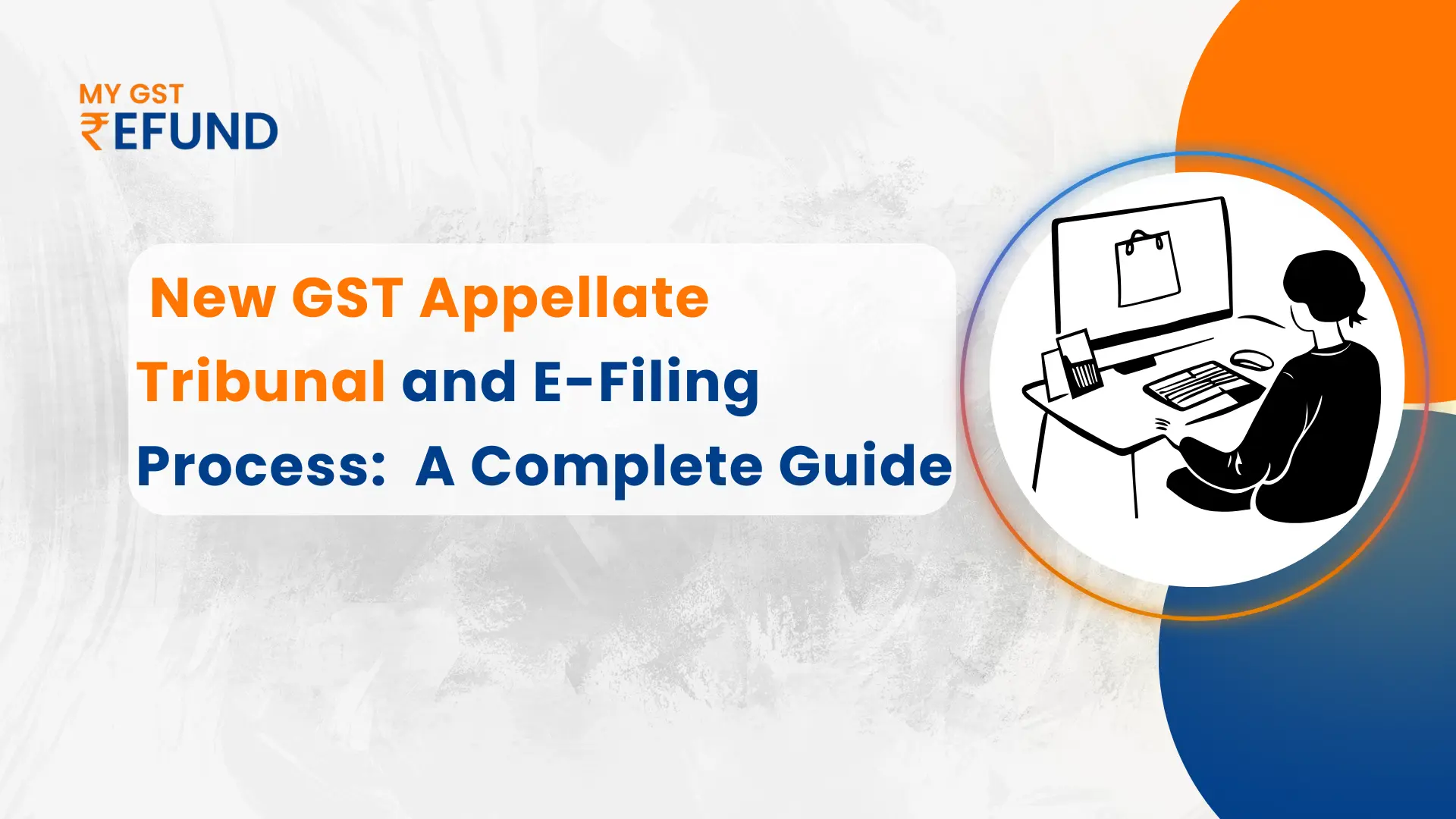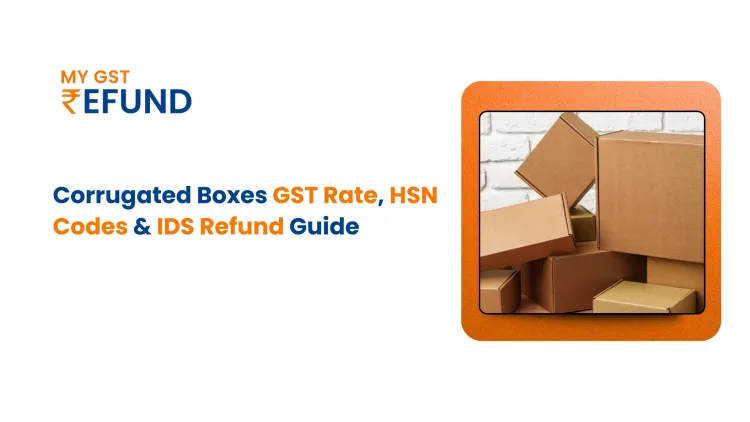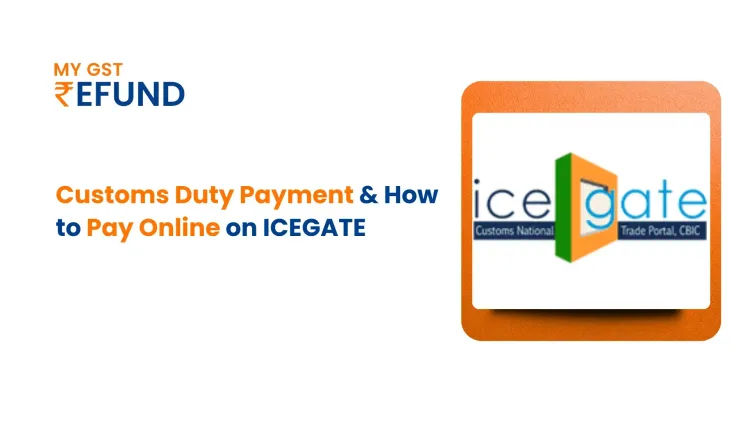New GST Appellate Tribunal and E-Filing Process
Published on: Mon Sep 29 2025
Bio (Reveal/Hide)

A Complete Guide to the New GST Appellate Tribunal and E-Filing Process
The 24th of September 2025 saw a new era in the history of indirect taxation in India as the Union Finance Minister officially commissioned the Goods and Services Tax Appellate Tribunal (GSTAT).
Significance of the GST Appellate Tribunal
GSTAT is a gift to all stakeholders of the GST system.
For Enterprises: GSTAT provides a technical and professional platform for appeals against GST orders. It should lead to faster, foreseeable, and unbiased resolution of tax disputes, litigation costs, and time saved. Enterprises would have had to go to the High Courts previously, which was generally a time-consuming and expensive process.
For Tax Officers: The court clarifies hard legal interpretations and facilitates consistency in the imposition of tax across the nation. Judicial clarity in GSTAT's decisions will act as precedents and aid officers in making decisions, and reduce uncertainty.
For Tax Compliance: A good model of dispute resolution, like GSTAT, instills taxpayers with confidence in the tax authority. Through compliant action on the part of the taxpayer in the belief that there is a fair appeals mechanism, it ensures complaints are heard and resolved by a panel of experts.
What is the GST Appellate Tribunal (GSTAT)?
The Goods and Services Tax Appellate Tribunal (GSTAT) is the second appellate forum instituted under the Goods and Services Tax (GST) Act for the resolution of disputes arising out of orders made by the first appellate forums.
Structure of GSTAT
It is a multi-level court to provide convenience and reduce the number of appeals in the nation:
Principal Bench: The Principal Bench is located in New Delhi, the headquarters of the GSTAT. It disposes of inter-state cases and also national importance appeals.
State Benches: In order to provide access to justice at the grassroots level, 31 State Benches will be established in 45 centers located across states and union territories. It's a deconcentrated setup where the firms can approach their own state-level Benches for the filing of appeals, which is economic and convenient.
Composition of the Benches
Each bench of the GSTAT consists of both judicial and technical members to provide legal and taxation implications to be considered in settling disputes. Membership in a bench is generally:
Two Judicial Members: Retired High Court judges or with rich judicial experience, with a legal background in the bench.
- One Technical Member (Centre): Expert with central indirect tax administrative experience.
- One Technical Member (State): State commercial tax administration expert.
Key Considerations of GSTAT Launch
The roll-out of the Goods and Services Tax Appellate Tribunal (GSTAT) is a key initiative of India's rationalization of the GST regime. The roll-out was about access, speed, and transparency, and a new-age simplified system of redress.
E-Filing Portal: One Stop Shop for Appeals. One of the other noteworthy features of the release is that India's first-ever GSTAT e-filing portal was inaugurated. The standalone online portal is to be the one-stop shop for all the functionalities related to appeals, with a hassle-free and seamless experience for the litigants as well as legal professionals.
Leadership Retd. Shri Sanjaya Kumar Mishra, Chief Justice, Jharkhand High Court, has assumed the role of the first President of the GSTAT. His judicial experience will be useful while imparting great leadership and guiding the tribunal in its formative years.
The tribunal's digital-first approach can be seen in its most critical functional zones:
Online Filing: Appeals, affidavits, and evidence can be filed online to avoid the time and effort of making visits to the post office.
Online Fee Payments: Payment of fees payable in respect of filing of appeals is all possible online through any of the electronic modes.
E-Signing and Authentication: The website is Aadhaar and Digital Signature Certificate (DSC) enabled for safe and valid e-signing of documents for authenticity and integrity purposes.
- Staggered filing period ending December 31, 2025
Compare the reference order period table with the desired window of filing. - Demonstration of staggered filing up to June 30, 2026.
Notes: Typical 3-month cut-off date of April 1, 2026; missed slots; manual ARN/CRN cases.
| Reference Order Period | Preferred Filing Window |
|---|---|
| July 2017 – Dec 2019 | Oct – Dec 2025 |
| Jan 2020 – Dec 2021 | Jan – Mar 2026 |
| Jan 2022 – Dec 2023 | Apr – Jun 2026 |
| Jan 2024 – Dec 2025 | Regular 3-month limit (from Apr 1, 2026) |
- Filing up to June 30, 2026, permitted.
- Normal 3-month rule to be used after April 1, 2026.
Missed time intervals and manual ARN/CRN cases are to be dealt with separately.
How to do an offline GSTAT Appeal
Filing a case before the Goods and Services Tax Appellate Tribunal (GSTAT) is followed by significant preparatory action on the home page of the portal. The initial steps are to be performed in order to avoid any inconvenience and mistakes while filing.
1. Offline Preparation
Offline preparation has to be done before online filing. This is the most time-consuming step, and it has three critical tasks to perform:
Download Offline Utility: Download the offline utility in Excel format from the GSTAT portal.
Pre-fill Appeal Details: Fill in all the appeal details in this Excel form carefully. These are grounds of appeal, statement of facts, and relief sought. After filling these, the utility prepares a JSON file for upload. Data loss and online session timeout are not possible in this offline process.
Prepare Supporting Documents: Scan and prepare PDF copies of all the documents you require, including the order on which you are appealing, the original application, and any other supporting documents.
2. Choose Your Role
The first thing you need to do as soon as you reach the GSTAT portal home page is select your role. The system needs to know who the appellant is, so it will automatically populate the correct interface and forms. Your options are:
Taxpayer: The aggrieved taxpayer or firm against a GST order.
Tax Officer: A departmental officer.
Authorized Representative (AR): An individual, such as a lawyer, Chartered Accountant, or GST Practitioner, who acts on behalf of the department or the taxpayer.
3. Confirm Your Case
After you've selected your role, you must ensure that you have appeal rights. This process links your new appeal to the original order. You will be required to file the:
Appeal Reference Number (ARN) or Case Reference Number (CRN) of the order that has been cancelled by the lower authority (the First Appellate Authority) against whom you want to file an appeal.
The number cross-verify with the order in the portal and check whether you are within the law-prescribed time limit for an appeal. Once successful cross-verification, you can proceed and upload your documents, ready for and complete filing.
Overview of E-filing and Submission Process GSTAT
E-filing and submission procedure is an online step-by-step procedure to make an application or appeal in a hassle-free manner.
Step-by-Step Process of GSTAT
The procedure is largely classified under the following step-by-step process:
Step 1: Login/Register
The candidate must first log in to the web portal by using their Back-office ID or GSTIN (Goods and Services Tax Identification Number) for verification purposes. The new candidates will be required to go through a registration process.
Step 2: Enter Basic Details
It is regarding filling in important details such as order details (on which appeal is being submitted), plain applicant details, and case details information.
Step 3: Enter Authorized Representative (AR)
Where the applicant is represented by someone else, i.e., an attorney or tax preparer, then Authorized Representative information will be needed to be filled in. That usually means the AR will have to be pre-registered on the website.
Step 4: Fill in Financial Information
The applicant will need to fill in the amounts involved (demand details) and provide proof of initial payment required (pre-deposit data) to allow filing of the appeal.
Step 5: Attach Documents
Proper case-supporting documents need to be submitted online. They are typically the appeal memo, legal requisite affidavits, vakalatnama (power of attorney), and the order appealed against.
Step 6: Validate and Preview
The application should be verified carefully by the candidate before the final submission to ensure all required fields are filled in and proper documents are attached. A preview of the application is created to ultimately check the input data.
Step 7: File the Application
Final step, wherein the signed application is digitally signed (typically by a Digital Signature Certificate - DSC, or OTP-based authentication) and submitted online to the concerned authority, and an acknowledgement receipt is provided.
How to Appeal Fee Payment
Online payment of the appeal fee is a filing procedure to meet the requirements of filing an appeal, especially for tribunals like the Goods and Services Tax Appellate Tribunal (GSTAT). The system is both in electronic and manual modes, flexible, and operates through the central government's Bharatkosh platform.
1. Online payment through Bharatkosh
This is the default real-time mode with immediate acknowledgement:
Mechanism: The portal generally interfaces directly with Bharatkosh (Non-Tax Receipt Portal - NTRP).
Payment Modes: It facilitates all electronic modes of payment, i.e.:
- Net Banking (NB)
- Credit Card (CC)
- Debit Card (DC)
- Unified Payments Interface (UPI) (e.g., Google Pay, PhonePe, etc.)
Outcome: Successful online payment results in an immediate electronic receipt or e-challan generation, which gets automatically linked or uploaded to the e-filing software.
2. Offline Payment (Upload of Challan)
This infrastructure is beneficial to the user who wishes to pay the fee outside of the appeal portal interface:
Mechanism: The applicant herself pays the fee on the standalone Bharatkosh portal using RTGS/NEFT or whichever such offline banking facility.
Submission: Once the bank successfully makes payment and a challan/receipt is generated by Bharatkosh, the applicant has to manually upload a copy of the challan (proof of payment) on the e-filing portal.
Completion: The appeal filing will be complete only when authentic challan details are entered and uploaded to the document.
This two-level mechanism provides hassle-free accessibility and aggregates all the government's non-tax revenues in a standardized format through the secure and standardized Bharatkosh portal.
How to file your GSTAT Appeal
GSTAT appeal start-up begins with initial work on the home page of the portal. All such initial work ensures hassle-free and right filling, an assurance.
Final Filing with Digital Signing
Options: DSC, NIC DSC Utility, Aadhaar e-Sign.
- Filing number generation, SMS/email acknowledgement.
- Save/download/print acknowledgement.
- Query successful
- Try again without apps
The Digital Signing & Final Submission is the last step of the e-filing process, legally validating the application and generating the necessary official record.
Why GSTAT Matters to Businessmen & Taxpayers
GSTAT is a flagship institution of the GST system. It ensures impartial and impartial resolution of disputes, which assures confidence in business and taxpayers about the system. In disposing of appeals involving taxation, it reduces the burden on the High Courts and speeds up justice delivery. GSTAT ensures consistency in GST judgments and avoids conflicting judgments among various states. Most importantly, it facilitates cooperative federalism in taxation, where Centre-State collaboration becomes more convenient.
Frequently Asked Questions
Q1. What is the official GSTAT e-filing portal?
The official website of GSTAT e-filing is https://efiling.gstat.gov.in, where taxpayers can file appeals online.
Q2. Due date of filing appeals on a staggered schedule?
Taxpayers can file appeals for current orders (APL-01, APL-03, APL-04) up to June 30, 2026.
Q3. Is there any fee for filing appeals in GSTAT?
Yes. Fee payment for the appeal is compulsory and can be filed securely through Bharatkosh (offline and online).
Q4. Is manual filing of GSTAT appeals allowed?
Manual filing is allowed only in case of old cases where ARN/CRN does not have any record in the GSTN system.
Q5. Can I be represented by someone before GSTAT?
A registered Authorised Representative (AR) of the GSTAT portal may represent taxpayers before proceedings.
Q6. What if I do not use my opted window of filing?
You can still approach on or before June 30, 2026, even if the staggered window I is not used.
Related Posts





